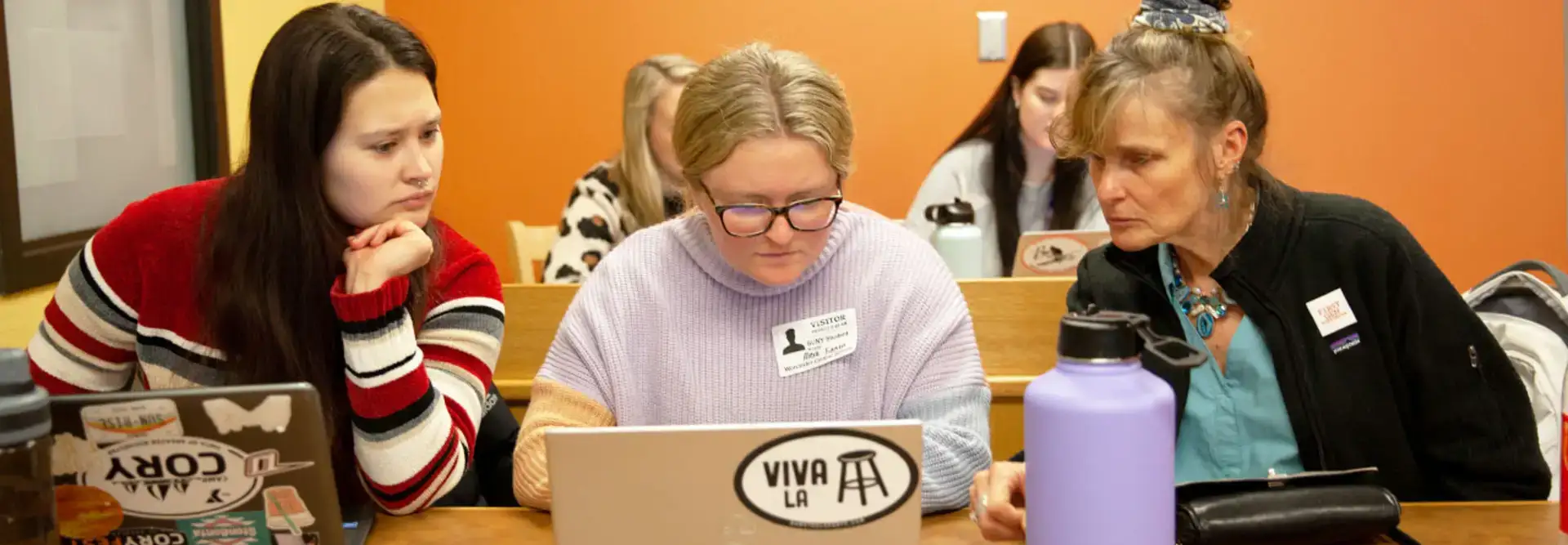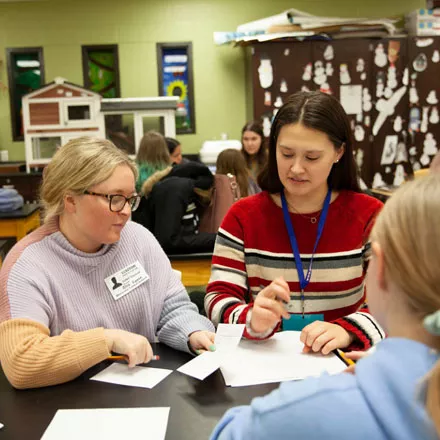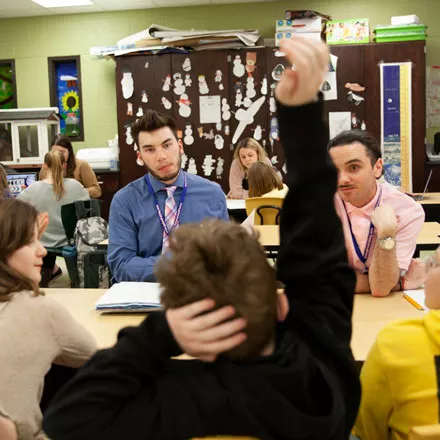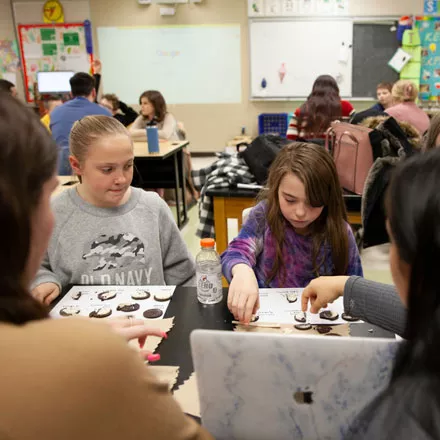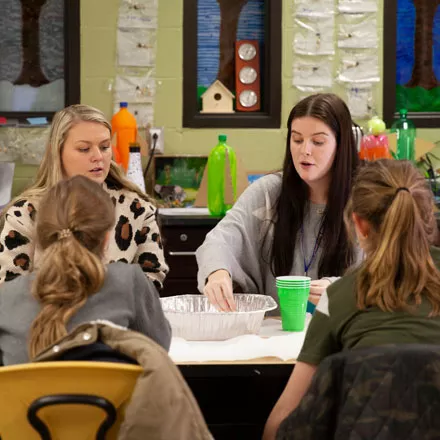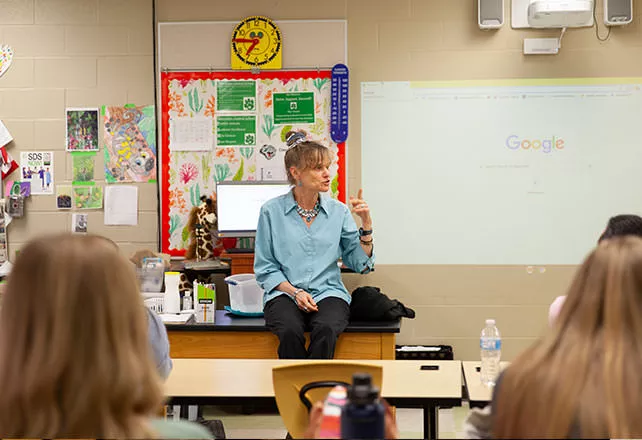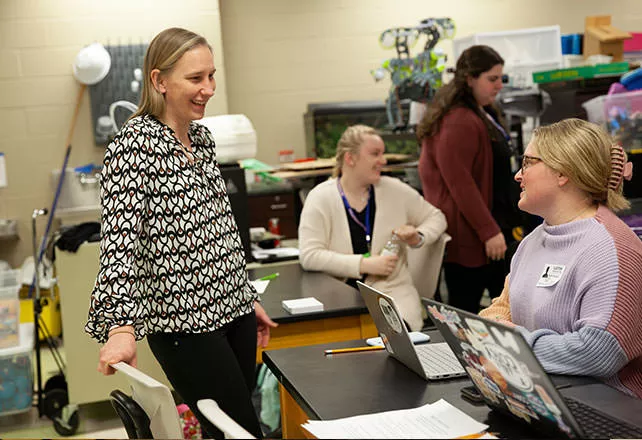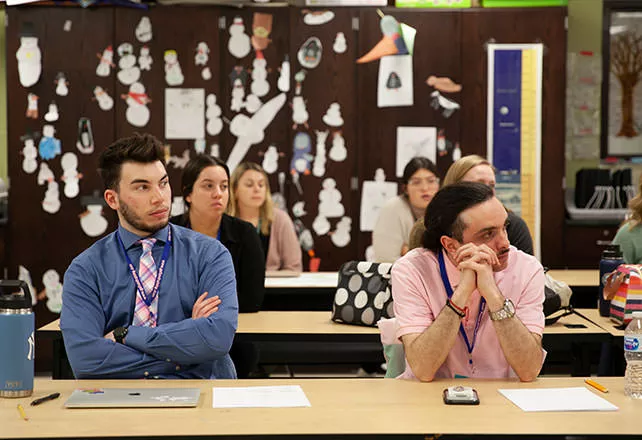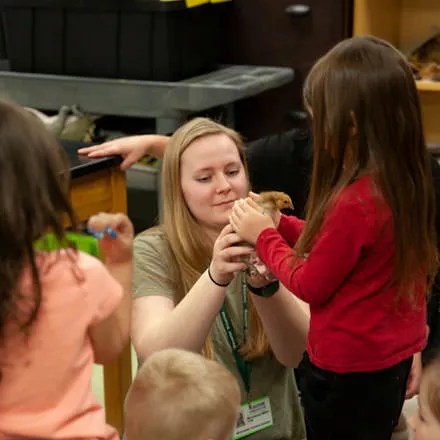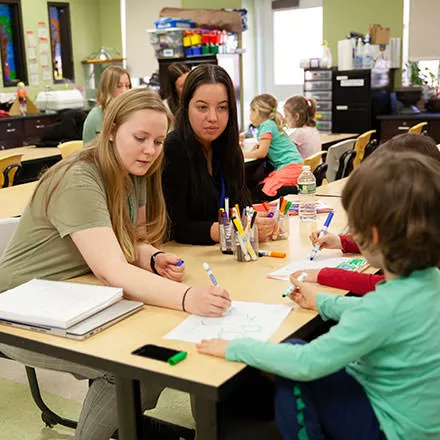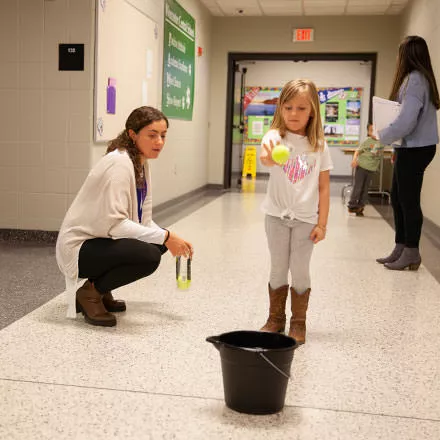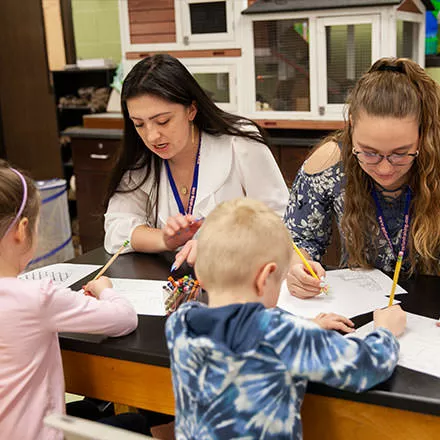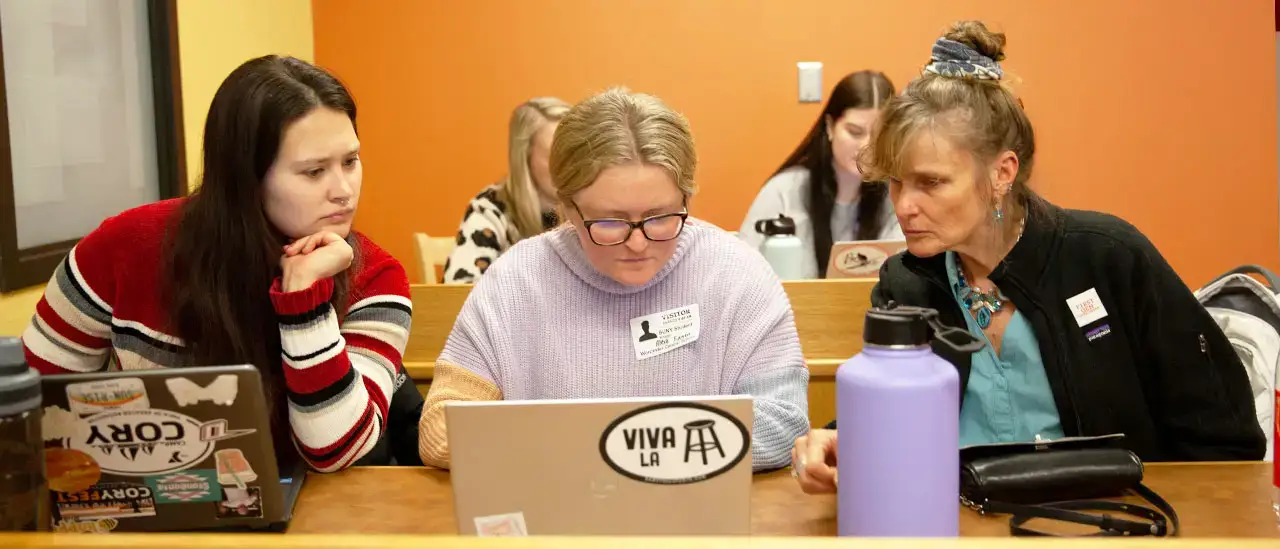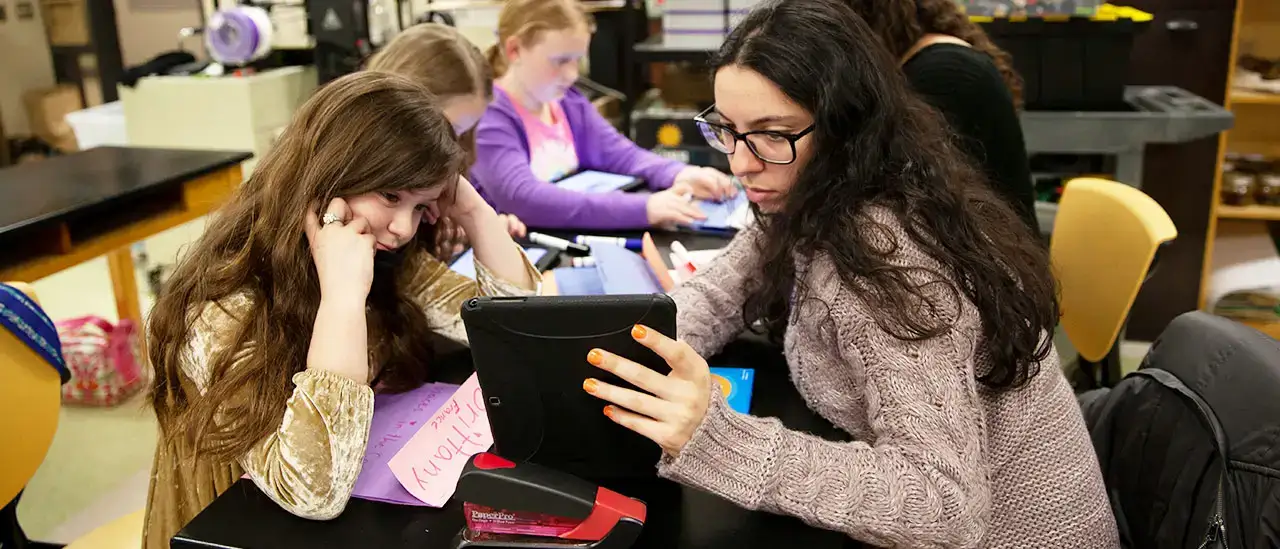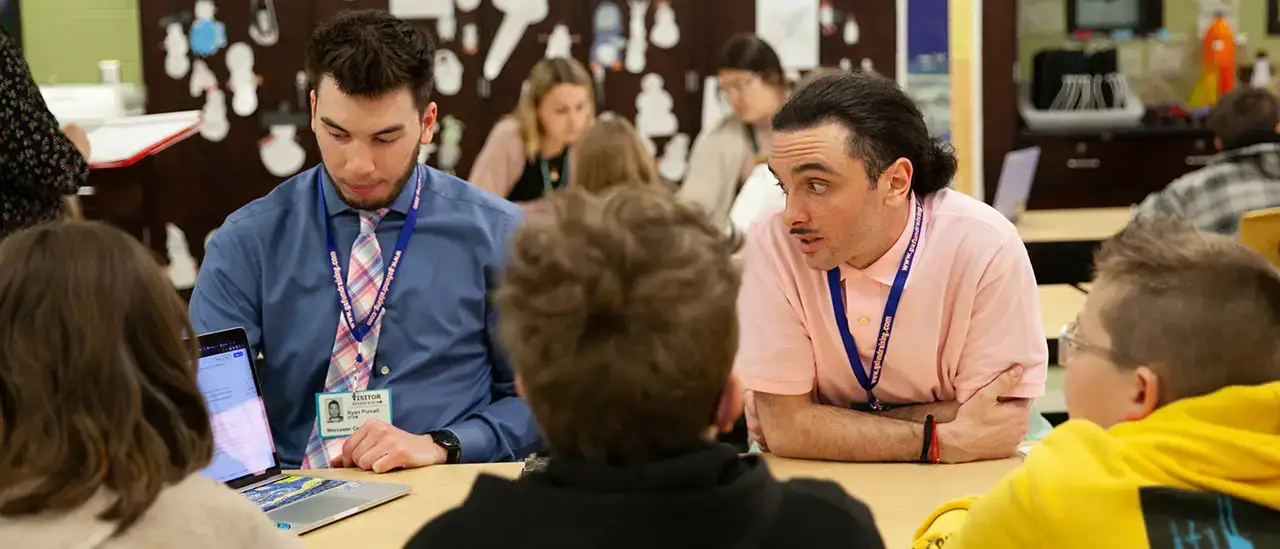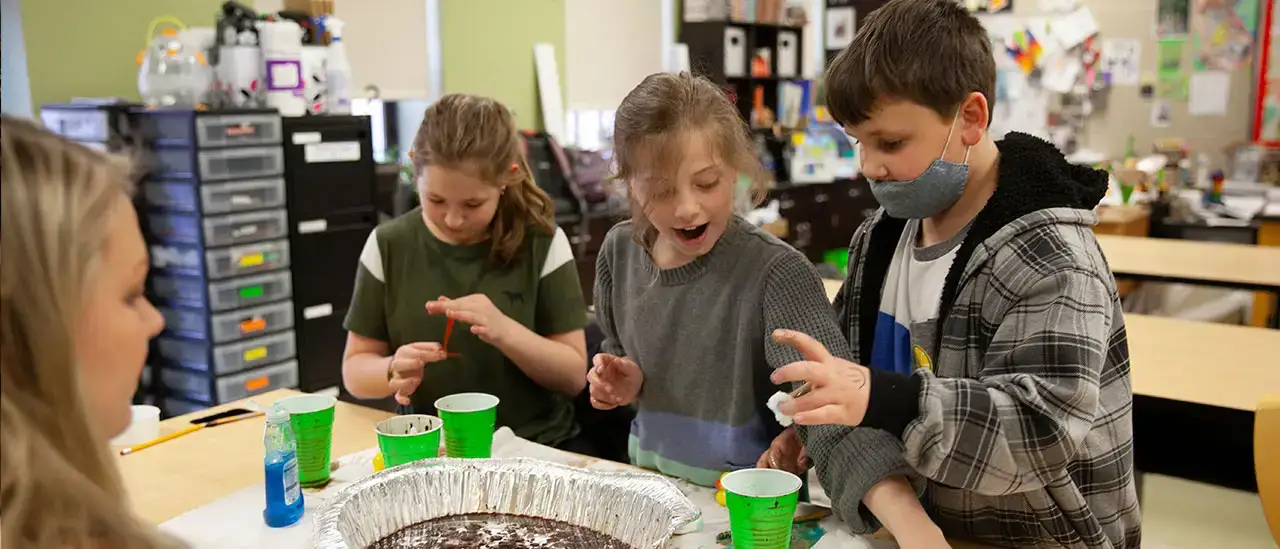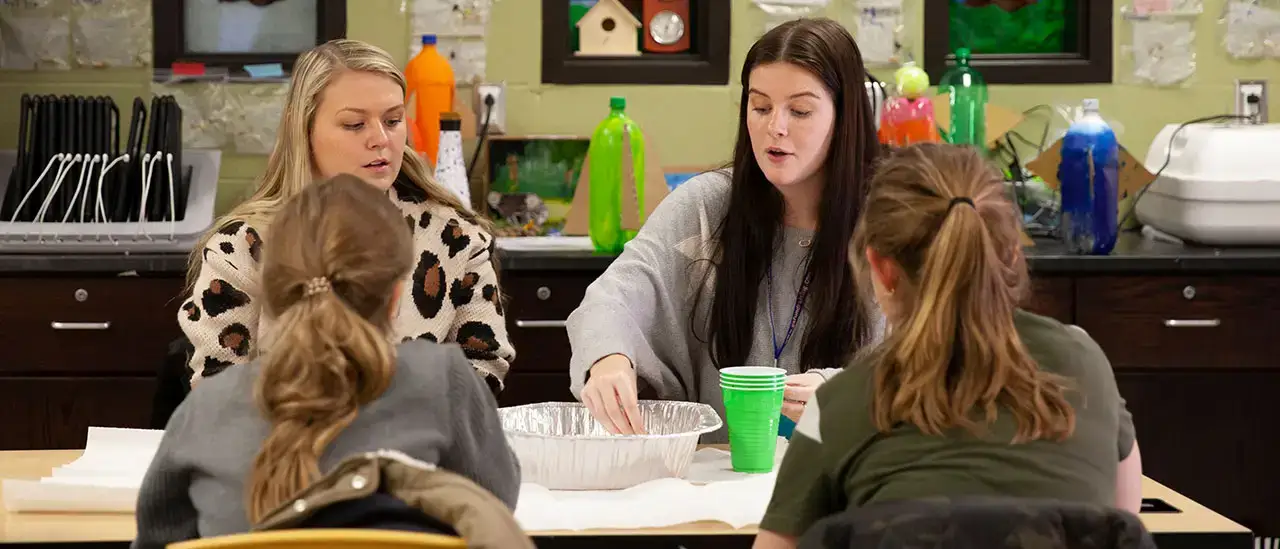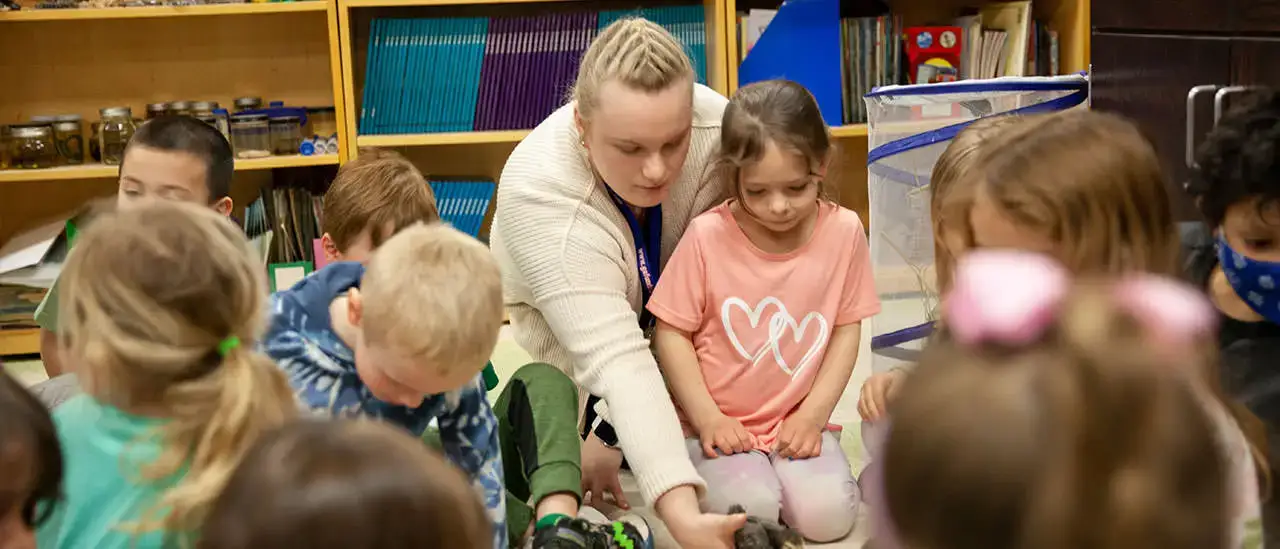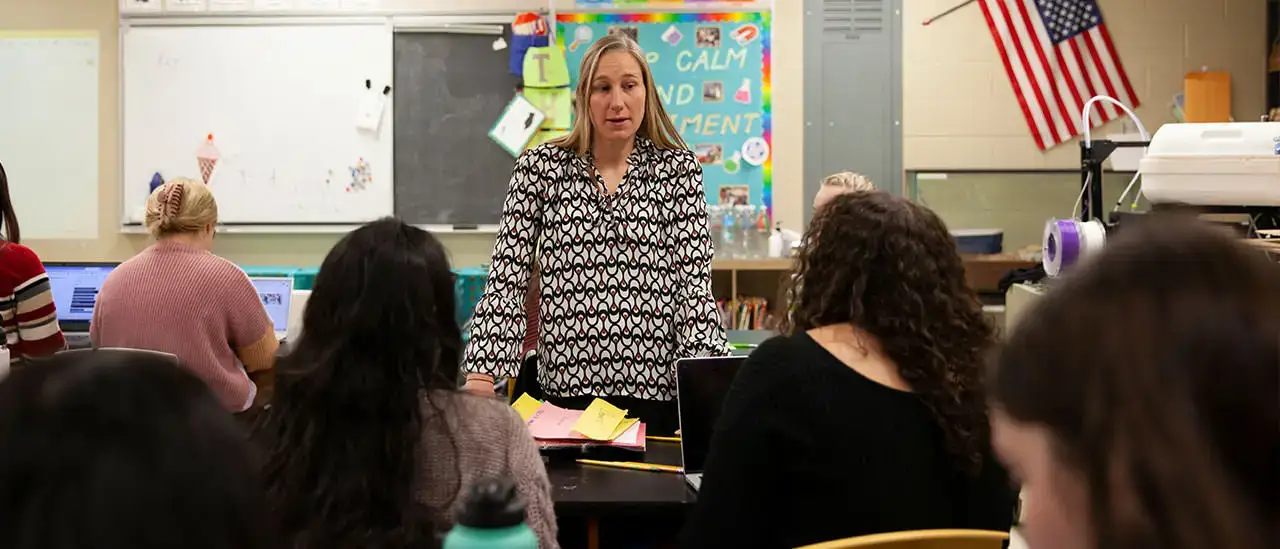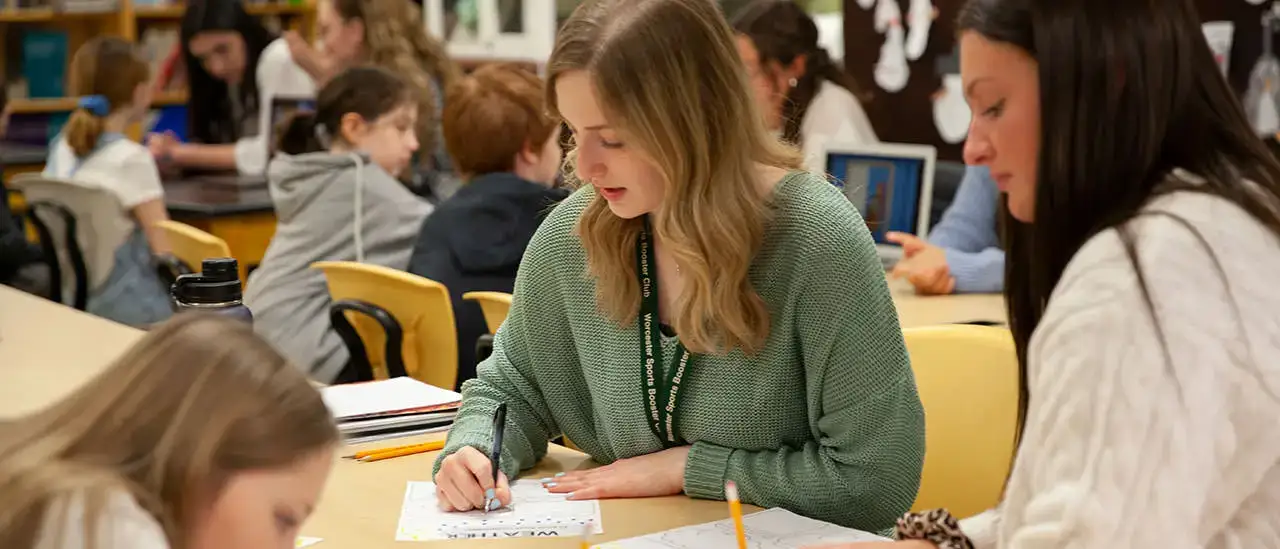“Block” is a semester of teaching methods classes, usually taken in senior year, prior to student teaching. Students (pre-service teachers) are divided into cohorts that take the same methods of teaching classes together and sometimes – as with Block 25 – do field experiences as a group. But unlike more typical field experiences, where students observe the classroom teacher or have brief interactions in various schools, SUNY Oneonta’s block semester includes a clinically rich component that allows students to immerse themselves as pre-service teachers for at least one full day in the same school each week.
The jackets and lunch boxes have been stowed, the first bell has rung, and 22 Elementary Education students are sitting attentively in rows of desks, pens in hand.
In the back of the classroom, baby chicks are peeping from a bunny house-turned-chicken coop. Clear plastic bags containing germinating lima beans are tacked up on the wall, next to the chick incubator and the swallowtail butterfly cocoons. To the front, next to the door, there’s a tank of brown trout that will be released in June into a stream at a farm down the road. Along the side of the room are two sinks, a box of Madagascar cockroaches and two colorful Lego robots that tower above shelves piled high with science supplies of all kinds.
“Welcome to Block 25,” says Dr. Leanne Avery, professor and chair of SUNY Oneonta’s Elementary Education and Reading Department. Let the fun begin.
“The college kids are here!”
Today is Tuesday, and that means Block 25 has arrived in Worcester Central School STEM teacher Sandy Knapp’s classroom ready to teach – and learn – at 8:30 a.m. sharp. It’s a clinically rich classroom where students in grades pre-K through 8 have their core science lessons, with one class coming each period of the day, similar to other “specials” like art, music and physical education.
Both the STEM room and Worcester’s partnership with SUNY Oneonta have been in place since 2015, and it has become an exciting and rewarding part of Knapp’s work as a teacher.
“The best part is seeing the connections they make with the students,” she says. “Our kids, they so look forward to it. Every Tuesday, they say, “The college kids are here!”
After a morning meeting with Avery and department Lecturer Jacqueline Myers, who is here today to observe how the pre-service teachers integrate literacy into their science lessons, the class divides in half. One group heads to a small classroom off the library for teaching methods instruction with Avery. The other remains in the STEM room with Knapp to work with the pre-K students. After lunch, they will switch.
Getting their feet wet
Today is a C Day, which means students in pre-K, second grade, fifth grade, sixth grade and eighth-grade will be coming to the STEM room, and the pre-service teachers will test the lesson plans they developed with their teaching partners for each grade level.
“They’re doing extraordinary work in taking on this opportunity to work with students for a whole day every week,” Avery says. “It’s very different from preparing for a college class. They’re getting their feet wet and really committing to a high level of professional practice.”
During the half-hour lunch break, the college students grab their colorful lunch boxes and eat with their professors at desks in the STEM room. “This is sacred time,” Avery says. But the sixth-graders will arrive soon, and there are last-minute preparations to do. One pair of teaching partners projects a world map onto a smart board on the wall, tapes a sheet of white paper on top of it and begins tracing it in black marker.
Throughout the day, pre-service teachers try out lesson plans ranging from having pre-k students color squares making up the sides of a rectangle and count them aloud to understand how 10+6=16, to challenging sixth-graders to write a persuasive letter to the producers of “The Amazing Race” about which of the world’s biomes would make the best settings for the next season.
Real-life experience
It’s a long day, but these future teachers say it’s worth it for the chance to get this real-world, supervised practice.
“This is much different from the observation hours that we would be doing. This actually gives you a real idea of what the normal day would look like,” said Matthew Hartman, an Early Childhood/Childhood Education major from East Atlantic Beach, NY, and one of two Block 25 students who have been offered substitute teaching jobs at Worcester through the partnership.
“Coming here every week has been so different from other field experiences in such a positive way,” agreed Dayna DeAngelo, an Early Childhood/Childhood Education major from Old Forge, NY. “We get to make connections with not only the students, but the teachers. It’s giving us real-life experience of what it would be like to be a teacher and really building our confidence.”
